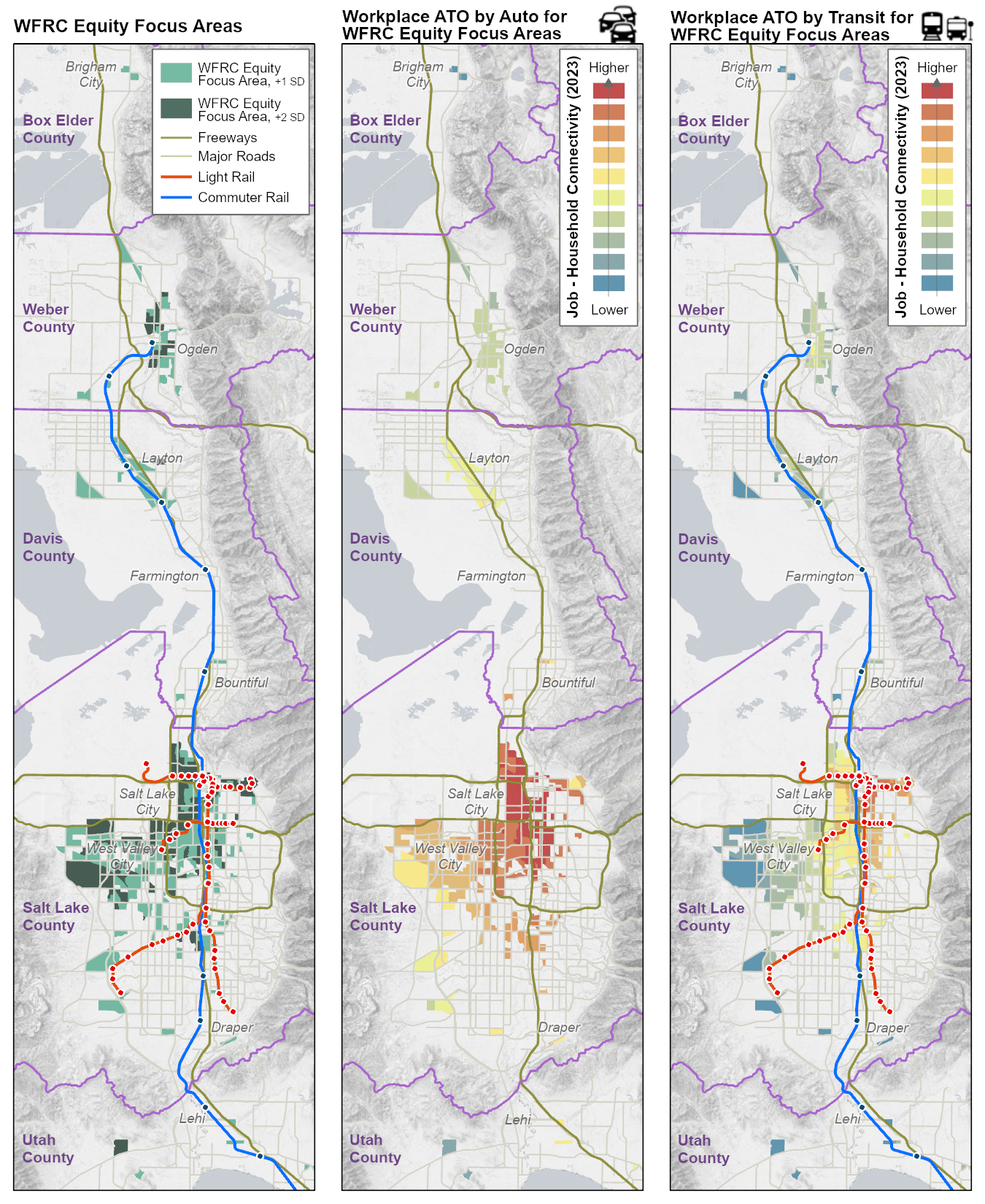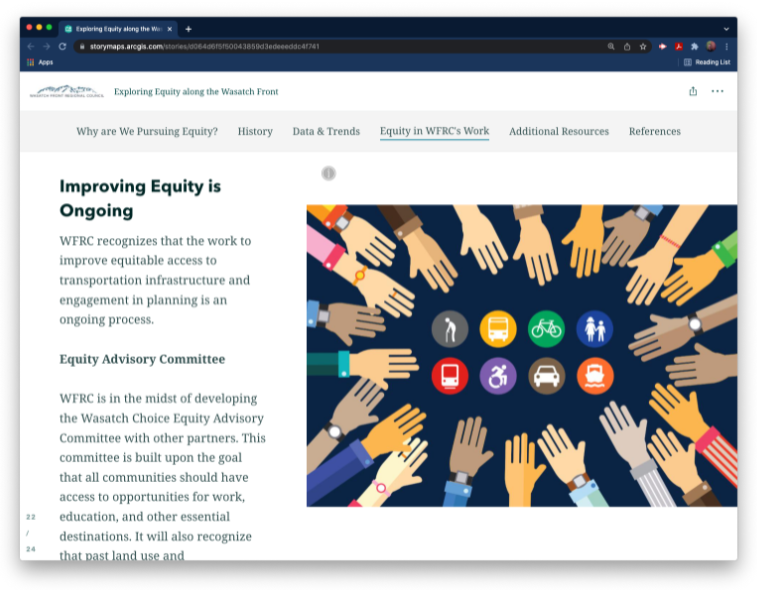Image courtesy of the Boston Region Metropolitan Planning Organization.
All residents of the Wasatch Front should have access to the opportunities that are important to lead a productive, healthy, and fulfilling life.
WFRC, through its Council of elected officials and other community leaders, has adopted an organizational goal to “promote inclusive engagement in transportation planning processes and equitable access to affordable and reliable transportation options.” To advance this goal, WFRC will:
- Ensure inclusive engagement and participation in WFRC planning and decision-making processes
- Employ an Access to Opportunities framework as a primary lens to evaluate transportation, land use, and economic development initiatives.
Providing access to opportunities is core to WFRC’s work. Accessibility means people are able to easily, efficiently, and safely reach key destinations including jobs, schools, healthcare, childcare, parks, places of worship, and grocery stores. Access to opportunities can be increased by providing quality transportation options and by coordinating housing, land use, and economic development with transportation. This can have significant impacts on overall community livability, while breaking down barriers to individual and family upward economic mobility.
WFRC’s Equity Focus Areas (EFAs) are geographic areas for which additional consideration may be given within the planning and programming processes for future transportation, economic development, and other projects administered through WFRC. EFAs are used by WFRC in support of meeting the Council-established goal of promoting “inclusive engagement in transportation planning processes and equitable access to affordable and reliable transportation options.”
EFAs are designated from Census block group geographic zones that meet the criteria described below. Census block groups are used as these are the smallest geographic areas for which more detailed household characteristics like employment, income, vehicle ownership, commute trip, and English language proficiency are available. [More information on EFA methodology]
For analysis purposes, Equity Focus Areas are those census block groups where any of the following criteria is met:
- Greater than 20 percent Low-Income — low-income populations are highlighted, as a lack of access to reliable and efficient transportation can be a major barrier to economic mobility.
- Greater than 40 percent Persons of Color— racial-ethnic minority populations comprise this criterion, as many land use and transportation investments in the U.S. have had disproportionately adverse impacts upon communities of color.
WFRC recognizes the limitations of geography-based equity analysis, as proper planning work considers together the needs of individuals, groups and sectors, and geographic areas. However, geography-based equity analyses offer a useful starting point for the consideration and prioritization of projects that will serve specific community needs.
ATO can help us see gaps between residents and employment opportunities and other basic needs at a neighborhood-level. This is especially relevant for underserved populations that may benefit most from alternate forms of transportation in order to access key needs.
These maps show block groups identified meeting the WFRC Equity Focus Areas definition (left-most) and their workplace accessibility (TAZ-based ATO) scores for vehicle travel (center map) and the transit system (right-most), relative to the MPO region as a whole. Areas with higher ATO scores are shown in red and orange on the two maps. Areas where Equity Focus Areas have less workplace connectivity are shown in yellow, green, and blue. This interactive web map also shows the same datasets.
These maps highlight that access by transit is more limited for residents of Equity Focus Areas in western Salt Lake County, Layton and the surrounding area east of I-15 in Davis County, and eastern Weber County. This is due to gaps in a frequent transit network in more suburban parts of the region as well as the fewer number of jobs located in these areas. Access to jobs and services via car is more limited for Equity Focus Areas in eastern Weber and Davis Counties, again due to the relative lack of employment opportunities in these areas. Land use diversity, or locating non-residential developments closer to homes, would improve access for these communities.

- Exploring Equity Along the Wasatch Front
- Diversity in Utah Data Book – Gardner Policy Institute (GPI)
- Health Equity Framework – Utah Department of Health
- The State of Transportation Equity in Utah – Utah Division of Multicultural Affairs
- UDOT Civil Rights & Title VI Program
- UTA Civil Rights & Title VI Program
- UTA Resources: FTA 5310 Grant Program, Utah Ride Link
- Utah Department of Cultural & Community Engagement
- Utah Department of Multicultural Affairs
- WFRC Public Participation Plan
- WFRC Title VI Plan and Resources

